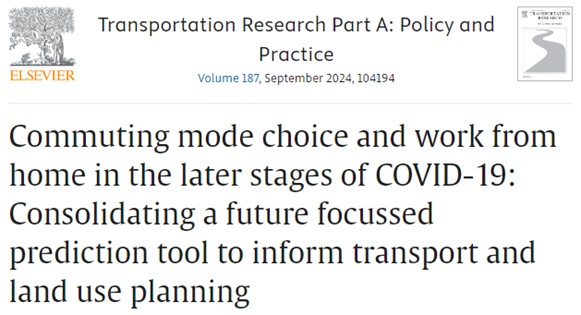David A. Hensher, Camila Balbontín, Matthew J. Beck, Edward Wei
Abstract
As COVID-19 slowly dissipated after 30 months since March 2020, working from home (WFH) continues to be popular, with support from notable numbers of employees and employers. There is growing evidence that we have either reached, or appear to be close to, a level of WFH − to some extent − that might be described as an equilibrium outcome going forward. Hence, there is a need to update any travel behaviour response models that have been developed during the passage of the pandemic. This paper sets out a commuter model for each day of the week for the Greater Sydney Metropolitan Area as of September 2022; where the alternative responses are to not work, WFH, or commute by one of ten modes available. Given the probability of WFH obtained from a mixed logit model, we construct a mapping equation to establish the sources of statistical variance by origin and destination locations that influence the incidence of WFH. The evidence is used as the basis of commenting on what this means for longer-term structural changes in network performance, the likely move to a greater focus on living locally, and the need (or otherwise) for employers to retain office space. A significant return to the office has recently been promoted by some employers, and we comment on this as to what it might mean for the future of a hybrid working location model.
